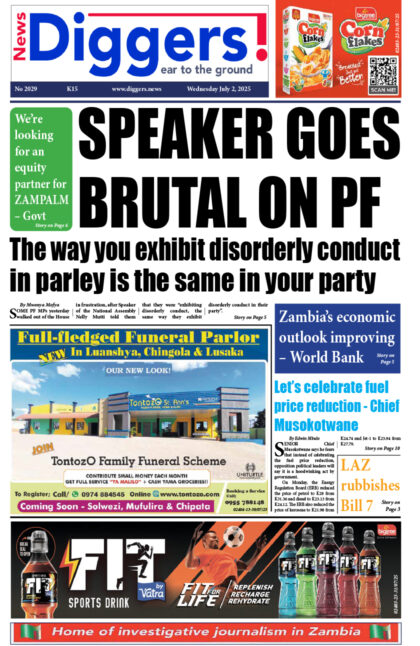WITHIN a space of one week Zambia experienced six deaths of school children(in school environment, by the way). One was in Chongwe where an animal concrete statue fell on a boy, another in Lusaka where a table killed another boy; and as if that was not bad enough, we had another sad story of four boys who drowned while doing some cadet practices somewhere in Mazabuka.
And surely anyone could ask, ‘How safe are our children in these schools?’ Every parent sends his/her children to school authorities knowing fully well that they are capable of looking after these young ones well and safe. Schools are expected to impart not only academic knowledge but survival skills as well. So if children start dying in schools, we all become worried.
I can say with no reservations that Zambian public infrastructure are poorly maintained, and more so, private schools which are mushrooming every day and everywhere. Many places we call schools are a makeshift of structures that are just a semblance of learning centers. Some are just houses converted into classrooms, without the requisites and amenities that go with learning. If any construction was done, then, even then, we can doubt if any architect was involved. Some schools built as far back as 1930 have never seen any repairs or regular maintenance. Those that were built in the past few decades, family-run private schools especially, have nothing to write home about. If our Zambian schools are not safe, it’s a sign of a huge cancer we have neglected for a long time.
Swings, slides, chairs, tables, scaffoldings or any little play things for learners are probably fabricated using cheap material by some incompetent welder in the neighborhood. Walls maybe built from some compacted soils and trusses maybe of untreated timber which rots every passing year.
The case of the Chongwe accident for example, where a Zebra statue fell and killed a boy could have been caused by either poor fabrication of the statue or lack of periodic maintenance checks on the strength or stability of the statue. The zebra statue may not be a living animal but it needed to be inspected regularly to make sure that the bolts and nuts that held it to the ground were intact and not loose or worn out.
In the Lusaka accident, the table that fell on the boy, and in the first one in Chongwe, lives could have been saved if regular risk assessments were done. Some people don’t know that if you leave a banana peel in the school corridor for one day and you have 1000 school children, chances are that one child would slip on the peel and fall and hurt himself. Similarly, the zebra in Chongwe and the table in Lusaka were just like banana peels waiting for someone to step on them. It’s an accidents in the waiting. School management in both cases failed to assess the risks posed by what was laying around their premises.
Our worries go even further than all these cases above. If government can fund a non-existent school as reported on ZNBC TV 19.00 hrs news on 14th June, 2022, how much joy can we have that the Ministry of Education can send inspectors to all schools to insure safety compliance? Do schools inspect their infrastructure regularly? How many have fire extinguishers? Are teachers trained in basic safety or preventive maintenance? Are they conversant in first aid? These and many other pertinent safety questions are what parents like me and any other interested persons need to be asking, especially after the three accidents above.
Some of the dangers in schools are various, among them broken windows, unfenced pits, naked electric cables, unstable piles of chairs, tables, cabinets, or even books. Overcrowding is another danger that can bring about accidents. I fear that with the introduction of free education in government schools, accidents in these learning institutions may just be another public headache we might start to deal with.
What can be done.
We must admit that government has no capacity to be everywhere every time. And so to protect our previous children from eminent dangers, Parents Teachers Associations (PTA) need to be proactive and not leave everything to chance. Schools should not only be interested in getting money from parents, but put the safety of children a top priority. Making safety a regular agenda on their meetings is efforts well spent. A safety sub-committee is not a bad idea either. Each class can appoint a safety monitors on a rotational cycle. This can make every learner become safety conscious every day. Teachers and safety monitors can do pre-shift safety checks at the beginning of every day. These are just measures to look out for looming dangers and correct them before they happen.
We can lobby government to include in teachers curriculum Safety and First Aid as modules they should take. School inspectors, if at all are there these days, need to up their game and insure that schools become safe places as they should.
For comments:
Whatsapp +260 97 2 777 285
Email: [email protected]




















One Response
Good article – Effort well spent.